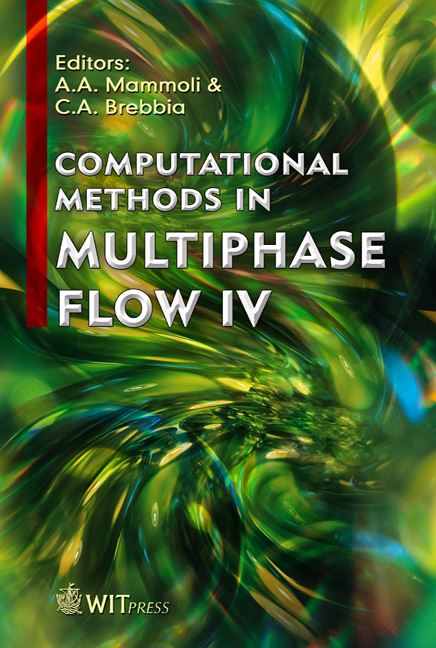Computational And Experimental Analyses Of A Liquid Film Flowing Down A Vertical Surface
Price
Free (open access)
Transaction
Volume
56
Pages
10
Published
2007
Size
382 kb
Paper DOI
10.2495/MPF070331
Copyright
WIT Press
Author(s)
S. Sinkunas, J. Gylys & A. Kiela
Abstract
The calculations evaluating velocity distribution across water and transformer oil film, and correspondingly the thickness of the film, are performed in this paper. Laminar plane film downward flow, and the film flowing on different convex surfaces of vertical tubes are explored. Equations for the calculation of local velocities in the film, with respect to cross curvature of wetted surface, were established. An evaluation of cross curvature influence on the film thickness is presented. An experimental study of velocity profiles for turbulent liquid film flow in the entrance region is performed as well. Analysis of profiles allowed estimating the length of stabilization for turbulent film flow under different initial velocities. Keywords: velocity distribution, thickness of the film, laminar film, cross curvature, turbulent film, entrance region. 1 Introduction The determination of hydromechanical parameters of liquid in falling film, emerging from a slit, is an interest in many applications of chemical, environmental and power engineering. The precise prediction of internal or external film flow plays an important role in the design of heat exchangers. The minimum total energy criteria for determining the minimum wetting rate, and the minimum thickness of an isothermal thin liquid film flowing down a vertical adiabatic surface, was examined in [1]. An analytical expression of the profile of a stable liquid rivulet and of two-dimensional velocity distribution in the rivulet was developed.
Keywords
velocity distribution, thickness of the film, laminar film, cross curvature, turbulent film, entrance region.





